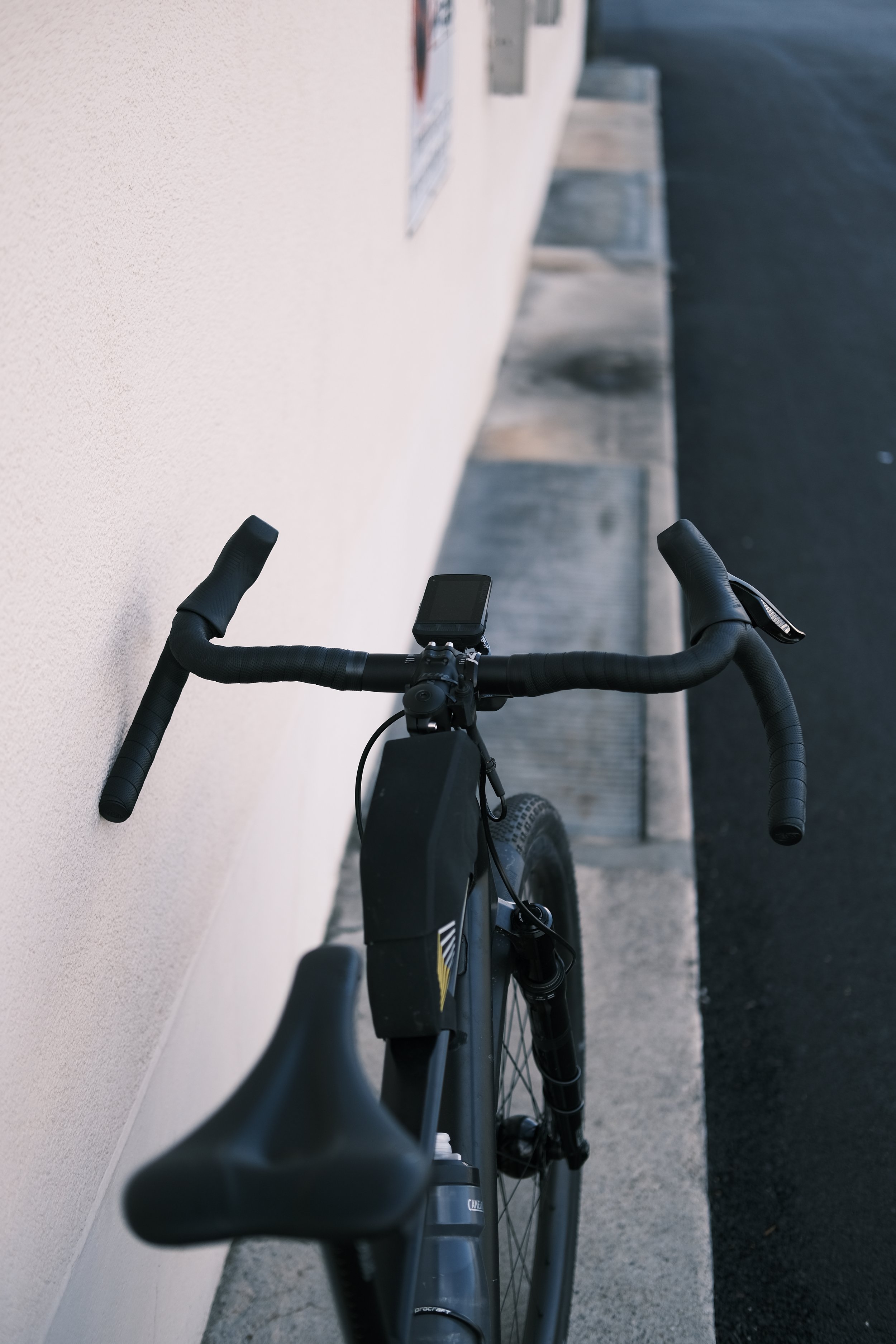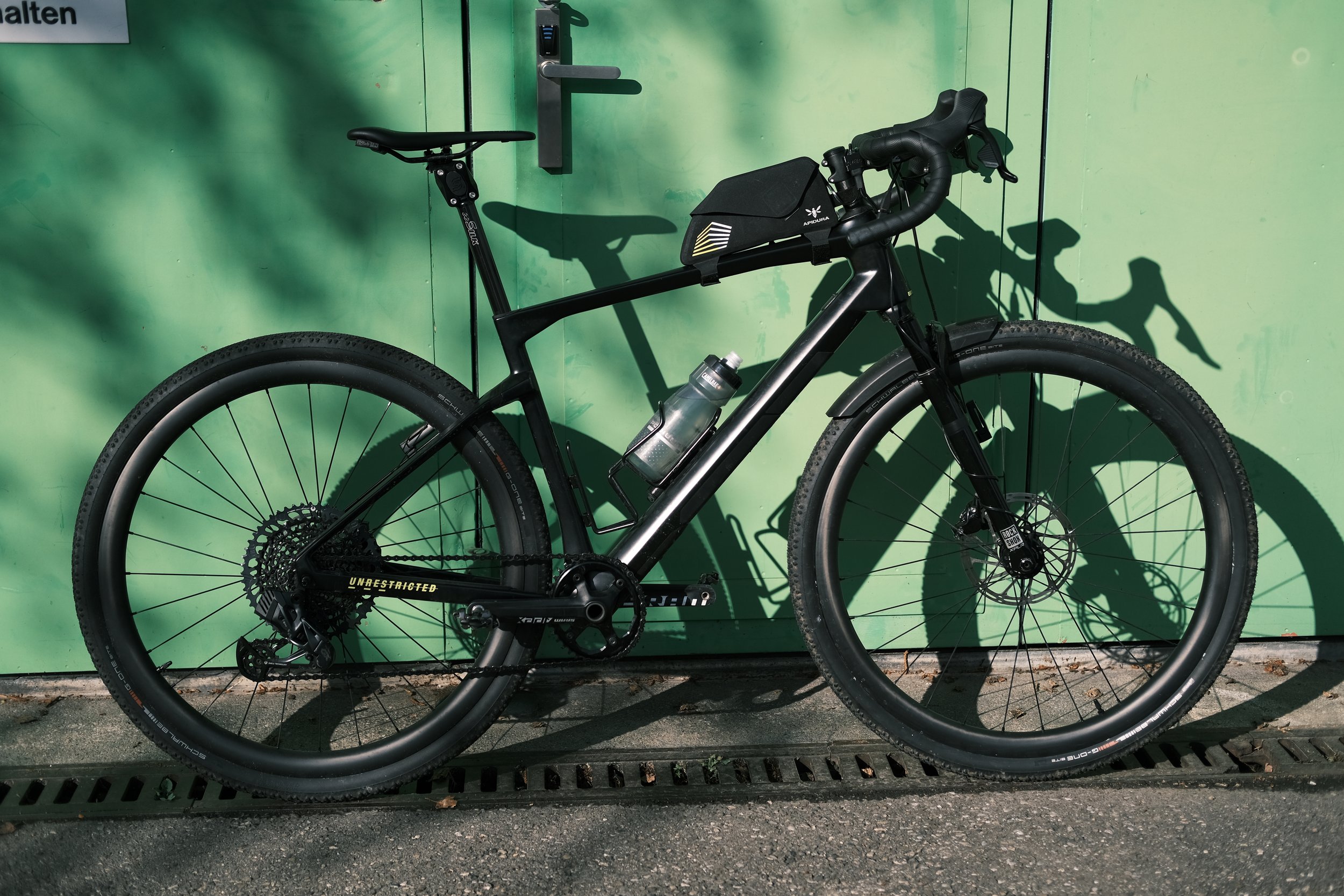BMC urs review
After a longer summer break, we're back with more test reports. Today, we’re taking a closer look at the bike that’s been my trusty companion on countless rides and tours over the past 1.5 years: the BMC URS ONE.
As always, please note that English is not my native language, so there might be some minor grammatical errors. I’m working on improving—thanks for your understanding!
Technical specifications:
Price: 2,999 CHF (I bought mine for 2,799 CHF in April 2021). Other versions, such as the LT model or those with the integrated Redshift stem, can cost up to 11,499 CHF.
Weight: The BMC URS ONE starts at a light 9.2 kg and goes down to around 8 kg in the highest-end spec.
Frame material: Carbon
Tire clearance: Officially 42 mm, unofficially up to 45 mm
My BMC URS
How did I find the BMC URS?
I started cycling in the middle of the pandemic/lockdown. Without much prior knowledge, I visited a local bike shop and asked for advice. Motivated—and with a lighter wallet—I left the shop with my first gravel bike: a Trek Checkpoint ALR 5.
I rode the bike for a few months, and that’s how cycling—especially gravel riding—quickly became something I couldn’t get enough of.
Unfortunately, in February 2021, I had an accident involving tram tracks. The crash caused significant damage to the bike, rendering it a total loss. Thankfully, my Trek was insured, so I found myself back at square one. But by then, I had gained a bit more experience and knew better what to look for in my next bike.
That’s when the real search began.
What was important to me?
Tire clearance of at least 42 mm
A significantly longer geometry (more mountain bike than road bike)
A carbon frame
Ideally, some kind of suspension or damping component
At the time, the bike industry was deep in the COVID-era supply shortage. There was practically nothing available that matched my criteria. So I started looking locally.
I live in Bern, Switzerland—just about 20 minutes from BMC headquarters—so their URS models were a bit easier to find in the area. After test-riding both available sizes, I settled on a size M.
Later in this review, I’ll share how well the bike lived up to my expectations—and my final thoughts on the URS.
Geometry
Geometry plays a big role in how a bike rides. Am I sitting on a sporty race machine or a relaxed, upright tourer?
When it comes to gravel bikes, there are generally two schools of thought. Some models borrow heavily from classic road bikes, while others lean toward mountain bike DNA. The BMC URS falls clearly into the latter camp.
The geometry is much closer to a mountain bike than a road bike. However, tire clearance is relatively limited—officially 42 mm WAM (wide as measured). That said, I ran 45 mm tires without any issues.
So what does “closer to a mountain bike” mean?
The URS has a notably long wheelbase (the distance between the front and rear contact points) and a slack head angle. These features are great for stability—especially on descents and in technical terrain. The slack 70° head angle makes the steering feel more “sluggish” or calm, which means the front end doesn’t twitch nervously on rough ground or at high speed.
There’s a minor downside, though: wheel flop. If you’re climbing slowly, especially out of the saddle, the front wheel can feel like it’s “wandering,” drifting slightly left and right. This is a common side effect of slack geometries. Still, with relatively narrow tires, it’s less of an issue than it would be on a full-blown mountain bike.
Overall, the position is still somewhat sporty. The stack-to-reach ratio is 1.37. (The lower this number, the more aggressive and stretched-out your riding position.) For comparison, my current bike has a value of 1.59, which results in a noticeably more upright, relaxed position. It took some getting used to, since my previous bikes had been more comfort-oriented.
Prefer single trail on the left or forest highway on the right?
With the BMC URS, both are no problem
Specifications
The bike came stock with a 1x11 SRAM Apex drivetrain, hydraulic disc brakes (180 mm front / 160 mm rear), a solid and affordable DT Swiss wheelset (1850 rims / 370 hubs), a WTB saddle, and—unfortunately—WTB tires. Overall, it’s a well-balanced and cohesive package for getting started, with the tires being the only real weak point.
The gearing—40t up front and an 11–42t cassette in the back—is decent for beginners. That said, gearing is highly individual. Someone riding mostly flat terrain doesn’t need the same setup as someone living near the Alps, for instance. There’s no “one-size-fits-all” answer here.
A highlight for me was definitely the 180 mm front brake rotor. Paired with hydraulic discs, this provides a strong and confidence-inspiring braking performance—especially on long descents.
Another standout feature is the MTT system integrated into the frame. Originally developed for BMC’s hardtail mountain bikes, it makes perfect sense on a gravel bike as well. The idea is simple: the rear triangle is connected to the main frame via an elastomer, which absorbs vibrations and small impacts. And yes—it actually works! Compared to a traditional rigid setup, the harsh hits are noticeably reduced. Still, I personally would have preferred a bit more than the 10 mm of “travel,” especially to compensate for the lack of plushness from the narrower tires.
Over time, I ended up replacing nearly every component on my URS—not out of necessity, but because I wanted to improve certain aspects, especially comfort.
The front end, in particular, offers great potential for upgrades. The geometry makes it easy to swap in a suspension fork like the RockShox Rudy. For a more budget-friendly option, you can simply upgrade to a Redshift ShockStop stem, which adds subtle but effective suspension to the cockpit.
At 2,799 CHF, the price-performance ratio was still fair in my eyes. For comparison: budget brands like Canyon or Rose offered similarly specced bikes for around 500 CHF less. Since then, prices have gone up—likely due to the bike boom and the supply chain crunch—with the most affordable version now costing about 200 CHF more.
Who is the BMC URS for—and who isn’t it for?
As mentioned, the URS has been my companion on all kinds of adventures for over 1.5 years: from quick after-work spins to long Sunday rides, and even a bikepacking trip through Italy.
The URS is best suited for riders who spend a lot of time on rough gravel or forest trails. It could also be a great fit for someone coming from a mountain bike background, since the geometry doesn’t feel like a completely foreign experience.
On the other hand, it’s not ideal for those who prefer a relaxed, upright riding position, or for riders who mostly stay on pavement or smooth gravel paths. In those environments, the URS simply can’t play to its strengths.
BMC URS 2.0?
The concept behind the URS is fundamentally solid: a sporty geometry with clear mountain bike genes and built-in comfort features like the MTT system. But for the next version—something BMC is likely already working on—there’s definitely room for improvement.
Let’s start with tire clearance. The frame is officially rated for 42 mm, but I’ve comfortably run 45 mm tires. Still, for a gravel bike this capable, that’s just not enough. A future version should accommodate at least 2.0" or 2.1" tires to fully unlock its potential on trails. Personally, I’d love to see clearance for up to 2.25"—putting it in competition with bikes like the Salsa Cutthroat. The market for true drop-bar mountain bikes is still pretty niche, and BMC has a chance to lead it.
The MTT system could also see an upgrade. Boosting rear compliance from 10 mm to something like 30 mm would go a long way in enhancing comfort without compromising performance. In the front, the Redshift MTT stem is a smart solution. It works well and doesn’t add unnecessary complexity, so I’d be happy to see it continue.
Positives:
The geometry is truly fun off-road and inspires confidence on technical terrain
The MTT system effectively smooths out rough surfaces
The D-shaped seatpost adds noticeable rear-end comfort
Neutral:
It’s not the most budget-friendly gravel bike on the market
The build kit—especially in the Apex or Rival spec—is starting to feel a bit dated
Front-end comfort is slightly behind the rear, but easily improved with a Redshift stem
Negatives:
Tire clearance is too limited for such progressive geometry. This bike wants to run 2.1" tires
Mounting fenders can be tricky due to awkwardly placed mounting points, though it’s still doable
Conclusion:
For me, the BMC URS is absolutely a top-tier gravel bike. It’s not the cheapest—but you could argue it’s one of the most fun. The geometry makes it easy—even for beginners—to ride technical trails and rough gravel with confidence and control. It also shines as a bikepacking platform.
If you’re looking for a gravel bike that leans closer to mountain bike than road bike, the URS is a compelling choice. Still, it might be worth waiting for a second-generation version—because it’s likely coming soon, and it could be even more capable.
I’d love to test the LT version or the full Redshift/MTT variant one day. Maybe that opportunity will come in the future.










